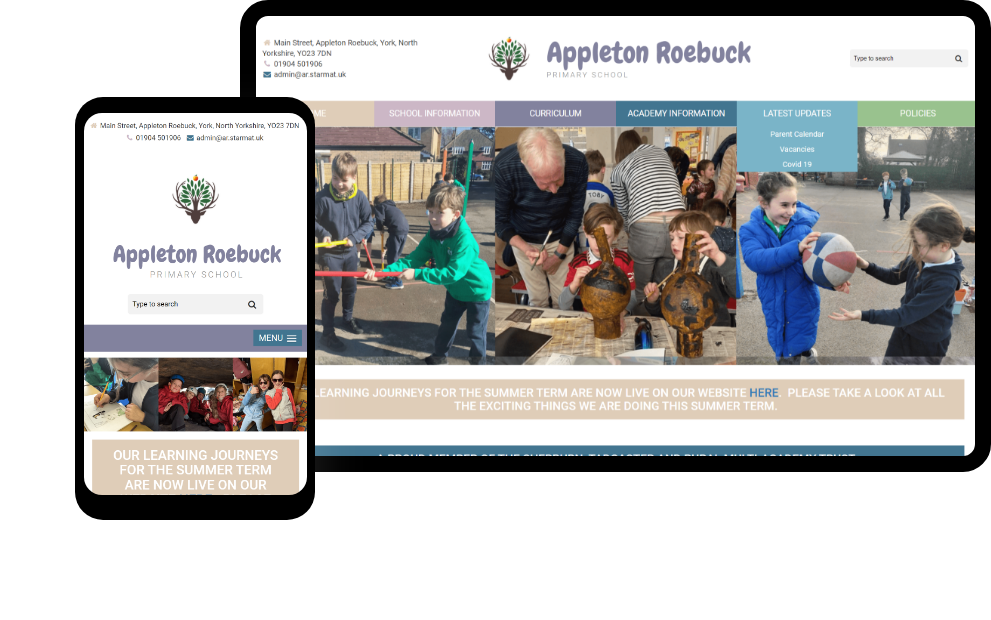Whether you’re an independent private school or part of a larger network, your students are the heartbeat of your institution. But how do you attract students year on year when there are so many other establishments on the market?
Digital marketing strategies can boost your online visibility to increase student enrolment in today’s digitally focused world. In this article, we discuss 7 strategies that you can implement today to increase enrolment.
Why Private School Marketing Matters Now More Than Ever
Attracting students to your school isn’t like it used to be; private school competition is only becoming fiercer by the year. New private education institutions are appearing all the time, making it imperative to stand out from the crowd to attract students.
But it isn’t just market saturation you need to be aware of — parents are searching for more than just outstanding academics. These days, they want a well-rounded experience, reassurance their child(ren) will thrive, and personalised attention throughout the deliberation, onboarding, and attending phases.
Parents and students alike are searching for schools in new ways, giving rise to digital-first decision-making and solidifying the importance of digital marketing in today’s private establishment world. It’s the only way to build trust and drive those enquiries.
7 Proven Private School Marketing Strategies to Boost Enrolment
1. Optimise Your School Website for First Impressions
First impressions don’t only matter on a human level, but on a digital level, too. Therefore, optimising your school’s website is a must-do for ensuring a positive initial impact. You don’t get a second chance to make a first impression, after all.
While there is a lot that goes into creating an optimised school website (all of which we can help you with), these are the three most important things to keep in mind when designing (or redesigning) your site:
- Mobile-friendly (responsive) design — We’re no longer relying on desktop devices to surf the web. In fact, the latest data shows 64.04% of all internet comes from mobile devices. If your private school website isn’t optimised for mobiles and tablets, you’re losing the majority of parents or students who browse on the go. A responsive site automatically adjusts to different screen sizes to guarantee a consistent user experience, regardless of the device it’s viewed on.
- Clear call-to-actions (CTAs) — From “Book a Tour” to “Download a Prospectus,” your website needs clear call-to-actions (i.e., buttons or links that tell people what to do).
- Showcase facilities, achievements, and testimonials — Parents need to get a feel for your offerings right off the bat. They shouldn’t have to search for basic information. So, make sure to highlight your institution’s achievements, facilities, and testimonials.
2. Use Storytelling and Video to Connect Emotionally
Video is a huge seller these days, especially with the rise of TikTok and Instagram Reels. You can use this to your advantage by placing videos on landing pages, home pages, social media, and even YouTube.
As for the content of your videos, ensure it matches the atmosphere and motto of your school. Capture student/parent experiences from past and present attendees or try behind-the-scenes content, so viewers can figure out whether your establishment is right for them (or their children). Recording such videos increases credibility, increasing the likelihood of enquiries.
3. Run Targeted Social Media Campaigns
Social media campaigns without proper targeting are useless, but with it, they can work wonders for your uptake.
Both paid and organic marketing can create flurries of enquiries. The former includes paid Facebook and Instagram ads that target local parents, while the latter includes student story write-ups, Q&As, and event highlights. Retargeting ads are also beneficial to show those who’ve previously visited your site what they’re missing.
4. Host Open Days and Virtual School Tours
Make sure you promote open days via email, flyers, and ads, and offer virtual tours for families who may not be able to make your open day dates. You can record segments of your in-person open days to add to video tours, ensuring every family gets the same experience.
5. Leverage SEO and Local Search Optimisation
Search engine optimisation ensures your private school appears high up on Google rankings, making families more likely to discover you. After all, nobody looks beyond the first page of search results.
We recommend focusing on:
- Claiming your Google Business Profile
- Using local SEO by targeting keywords such as, “independent schools near me” and “private schools in [location]”.
- Consistently uploading blog posts answering parents’ common questions
- Linking to different parts of your website from blog posts and other pages (called internal linking)
6. Build a Recognisable and Trustworthy School Brand
A strong, recognisable, and trustworthy brand is essential for private schools looking to increase enrolment. It’s the component that sets your school apart and allows families to connect with your values. Here’s how to develop one:
- Define your USP (e.g., pastoral support, academic excellence, extracurriculars)
- Ensure your visual identity is consistent across your website, logo, and prospectus
- Keep your tone of voice the same in all communications, including emails, printed newsletters, and social posts
7. Follow Up and Nurture Every Enquiry
When a parent or student enquires through your website, make sure to follow up and nurture them in a way that aligns with your school’s values. You should set up an email nurture sequence that occurs after form submissions. Offering downloadable resources (like the prospectus and admissions checklist) and guaranteeing consistent messaging from administration staff are fantastic ways to follow up on every enquiry to maximise results and boost admissions.
Marketing for Private Schools 101
Digital marketing takes time, but implementing these strategies will help potential students discover your school. And if something isn’t working? Change it! It’s important to adjust your school’s marketing strategy based on the data showing what works.


















